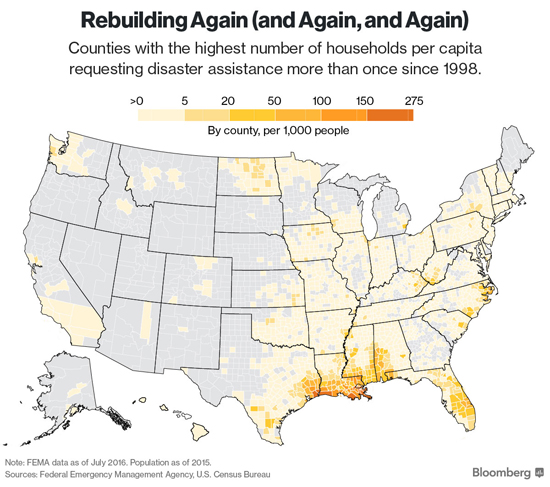Will FEMA Stop Funding Disaster Assistance?
Print this Article | Send to Colleague
While tragic wildfires in Tennessee rage on this year, the Federal Emergency Management Agency (FEMA) has spent over $1 billion to help households recover from natural disasters. But it should be noted that there are no limits on the number of times a household can apply, so the program isn't just a safety net; for some people, it's effectively a subsidy to live in areas that are especially vulnerable to hurricanes, floods and storm surges. This begs the question, if FEMA stops or seriously cuts back funding, will people move away from areas prone to disaster? Shouldn’t they just build more resilient homes and buildings?
Recently, FEMA changed its policy and required states to adopt the newest versions of the International Building and Residential Codes in order to qualify for funding. When coupled with incentivizing resilient construction with a tax credit and/or an insurance rebate (like in Georgia, Mississippi, Alabama and North Carolina), one wonders why there would be any objection. Data from the National Institute of Building Science’s Multi-hazard Mitigation Council also shows that for every $1 spent on disaster mitigation, society saves $4. So it would seem that it’s far cheaper to build resilient buildings than to move people away from the coastal areas.

Build With Strength, a coalition of the National Ready Mixed Concrete Association, is addressing this issue in many states and cities with both a public affairs campaign and a robust advocacy effort. To learn more about how NRMCA can assist in mitigating disasters and hazards in your state, please contact John Loyer at 703-675-7603 or jloyer@nrmca.org.

